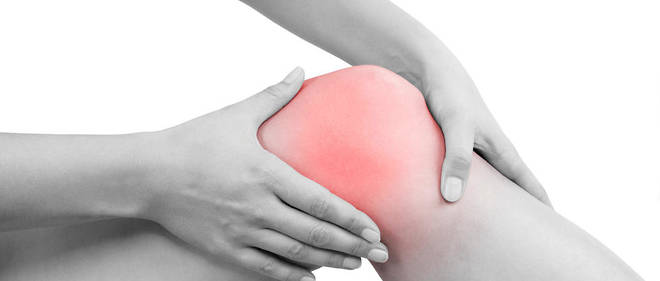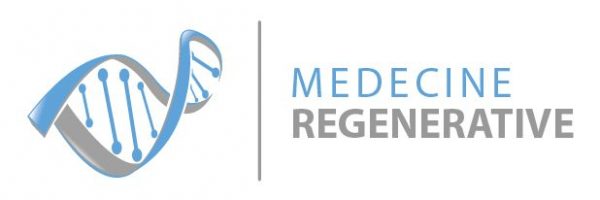Treatment of osteoarthritis of the knee
Osteoarthritis of the knee, which corresponds to a progressive destruction of the articular cartilages.
It evolves by pushes.
This explains why there are times “when things are better” and periods of real crisis.
What are the means to combat painful crises?
- Rest. Avoid joint overwork: prolonged standing, sports of course, but also stairs, cleaning, travel … Sometimes, depending on your job, a work stoppage may be useful.
- the strict rest. Sometimes necessary in case of very painful thrust: bed rest.
- the splint (only a few days), the ice, the use of one, or even two, crutches
- knee pads: there are different models depending on the type of osteoarthritis of the knee, the laxities and the deformations of which you may be subject.
- orthopedic insoles: on medical prescription and according to the axis disorders of the lower limbs that you have.

- But sometimes these means may not be enough and it will be recommended to take pills. Your general practitioner will guide you because he knows the possible contraindications to certain drugs that you can be subject to. Conventionally, to combat osteoarthritis of the knee, one uses analgesics of tier 1 (paracetamol) or tier 2 (tramadol or opiates) associated with anti-inflammatories. You can not take anti-inflammatories too long or too often because of gastric complications (ulcer, gastrointestinal bleeding) or kidney failure (kidney failure) they can cause.
- If this surge resists these treatments, one can consider a delayed corticoids infiltration into your knee. This gesture can be done in the consulting room, is not painful and can be done in most cases, even if you are on anti-coagulant. You can drive yourself by leaving. It will simply avoid overwork joint on the day of infiltration. The beneficial effects are quickly felt (a few days). This treatment is an “attack” treatment, it is not a long-term treatment for knee osteoarthritis. It can not therefore be frequently renewed. One must know “strategically” that it contra-indicates a surgical procedure of knee prosthesis during six months. The major complication of this treatment is the infection (septic arthritis). It occurs in 1 case out of 70 000 on average. This is why it is necessary to perform it under strict “surgical” aseptic conditions.
And between inflammatory flares:
the long-term treatment of knee osteoarthritis
The basic treatment of osteoarthritis of the knee involves:
- drugs
On request, depending on the result obtained, they use level 1 analgesics (paracetamol) or level 2 analgesics (tramadol, opium), possibly combined for a short period with an anti-inflammatory drug at a “spun” dose (this is say every other day or every other day) - chondroprotectors
They are based on soy and avocados (Piasclédine®), based on cartilage extracts: chondroitin sulfate (Structum®, Chondrosulf®) or extracts of a plant: diacerein (ART 50®, Zondar®). these drugs are no longer reimbursed by social security. They are slow-acting, so their benefit is not immediate. Their effectiveness varies from person to person. - It is during this period that you can do some exercises to avoid stiffening of your joint, either by self exercises at home, or at a physiotherapist.
Click here to find out more. - Hyaluronic acid infiltration This is viscosupplementation. Hyaluronic acid is a natural component of synovial joint fluid that allows cartilage to retain its biochemical properties. In the event of osteoarthritis the synovial fluid loses its mechanical properties and its quality, the cartilage is therefore less well lubricated and the osteoarthritis worsens. 6 times out of 10 the patient is a “good responder”, that is to say that he notes a certain improvement in his symptomatology. This treatment can be repeated once a year if the effects have been beneficial. It contraindicates surgery for 2 months. From a practical point of view, these infiltrations are carried out in my consulting room three times, one week apart. In the same way as a corticosteroid infiltration, you will be able to return home while driving yourself and it will be necessary to avoid joint overstrain the day of the infiltration. These injections in your knee are not painful and can be done without modifying your treatment, even if you are on anti-coagulants.
The major complication of this treatment is infection (septic arthritis). It occurs on average in 1 in 70,000 cases. This is why it is necessary to perform it under rigorous “surgical” aseptic conditions. - Infiltration of PRP (Platelet Rich Plasma)
It is one of the great hopes of research. In theory, the only treatment likely to reverse osteoarthritis.
In France, its use cannot be legally associated with the use of stem cells, which are prohibited in intra-articular administration because they require prior randomized studies to demonstrate their safety.
By cons the use of PRP alone is commonly used by me since September 2014.
To go to the specific chapter, click here.
Finally, in some cases, if the flare-ups are too frequent or respond poorly to treatment, we may rarely be required to offer joint washing under arthroscopy. This is done on an outpatient basis, under general anesthesia, by making two small holes in your knee to allow the passage of an arthroscope and an optic equipped with a camera, in order to clean the accumulated articular debris and “wash” the knee, in particular toxic enzymes and, if necessary, calcium crystals. This gesture lasts about 10 minutes. You must be accompanied to leave the clinic because of the anesthesia you will not be allowed to drive yourself.
The benefits are rapid and their duration over time varies from person to person.
Knee osteoarthritis surgery
It becomes necessary in the event of failure of well-conducted medical treatment.
- Tibial osteotomy
It is a conservative intervention that can be proposed in certain very specific cases. Generally in the event of a single osteoarthritis of the internal femorotibial compartment (arched legs), more rarely of the external femorotibial compartment (legs in X), without affecting the other compartments in a young person under 40 years of age.
It involves removing or adding a bony wedge to the upper part of the tibia.
The consequences are quite long because the resumption of walking support is authorized after several weeks. - Knee prostheses
There are several types depending on the case: depending on your age, your deformations, your laxities, etc … all these elements will be analyzed during the clinical and radiographic examination during your consultation in my consulting room.
There are about 60,000 per year in France. Their lifespan is on average 15 to 20 years.
Click here to go to the specific chapter.
When they are worn or loosened, they can be changed. This more delicate intervention is only to be carried out in a specialized center because of the specific and complex surgical equipment necessary for this intervention, the existence of a resuscitation service, and the experience of the surgeon, a primary factor. in this kind of surgery.
It represents around 20% of my activity. I only do it in Marseille, either at the Private Hospital of the Résidence du Parc, or at the Clairval Private Hospital depending on the case.
It is the subject of a specific chapter: click here resumption of prostheses to find out more.
